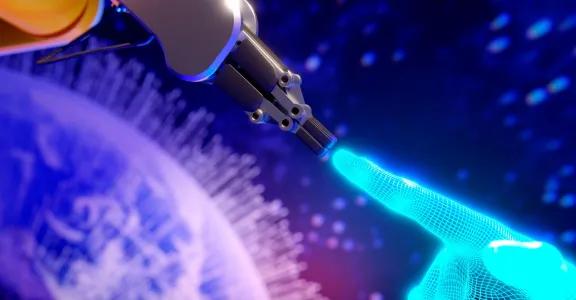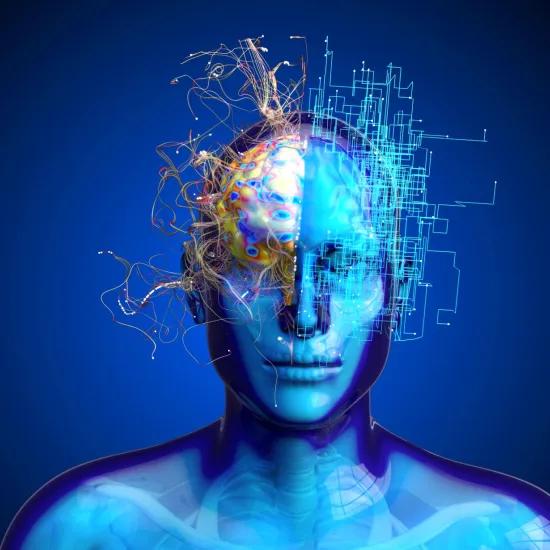The World Intellectual Property Organization (WIPO) Patent Landscape Report provides observations on patenting activity and scientific publications in the field of GenAI. If reading the whole 116-page document might be a bit too time-consuming, Sirris is happy to help and list five key insights of the latest version of the WIPO GenAI Patent Landscape Report.
GenAI’s iPhone moment
The release of OpenAI's ChatGPT in November 2022 has proven to be a milestone for generative AI (GenAI). It's been described as an "iPhone moment" for generative AI. OpenAI’s platform has made it easier for a larger public to access and experience advanced GenAI programs, especially large language models (LLMs). This has incited a wave of GenAI research and development and major corporate investments.
The WIPO wants to provide insight into the current state of the technology development, its landscape, and possible future applications of GenAI. In short, the who, what, when, where, and why of GenAI research and patents in 2024. Let’s take you through the report in five key stats:
1. GenAI patents and research: on the rise since 2017
Over the past 10 years, the number of patents in GenAI has grown from just 733 in 2014 to more than 14.000 in 2023. This increase was driven by three factors: more powerful computers, the availability of large datasets as a source of training data, and improved AI/machine learning algorithms.
The breakthrough factor was the development of the transformer model, the deep neural network architecture behind the Large Language Models in 2017. Since 2017, the number of GenAI patents has increased by over 800%. More than 25% of all GenAI patents and over 45% of all GenAI scientific papers were published in 2023 alone.
2. Most GenAI Patents are filed from China
China has been the leading country in terms of GenAI inventions over the past decade, with over 38,000 inventions emerging from the country between 2014 and 2023. This figure is six times higher than that of the United States, which ranks second. India, the fifth-largest hub for GenAI inventions, has witnessed the highest average annual growth rate among the top five countries, at 56%. The United Kingdom is the leading European location (6th globally), with 714 patents published in the same period, with Germany following closely (708 patent families)
Chinese corporations have filed the most patents. Tencent (a major Chinese tech conglomerate), Ping An Insurance Group and Baidu (China’s equivalent to Google) own the most GenAI patents.
The Chinese Academy of Sciences (fourth) is the only research organization in the top 10 patent ranking. IBM (5th), Alphabet/Google (8th) and Microsoft (10th) are the top US companies in terms of GenAI patents. Samsung (South-Korea) ranks 7th.
3. Most GenAI research is also China-based
The Chinese Academy of Sciences is the clear leader with over 1100 scientific publications since 2010. Tsinghua University and Stanford University follow in second and third place with over 600 each. Alphabet/Google is the only company in the top 20, with 556 publications.
However, when measuring the impact of scientific publications by the number of citations, companies dominate. Alphabet/Google is the leading institution by a significant margin.
Keeping GenAI’s iPhone moment in mind, the case of OpenAI is worth mentioning. Despite publishing only 48 articles (ranking them 325th among institutions), these publications have received a total of 11,816 citations. This places them 13th overall in terms of citations from other scientific publications.
4. GAN models take the crown
In recent years, a number of GenAI programs, or models, have been developed. The most prominent GenAI models are:
- Generative Adversarial Networks (GANs) is a deep learning model used for many tasks involving images such as generation and enhancement of photorealistic images.
- Variational AutoEncoders (VAEs): a type of neural network architecture used in unsupervised learning, used for example for generating sophisticated and diverse image samples.
- decoder-based Large Language models (LLMs): AI models trained on extensive text datasets to produce coherent and relevant output. They are the basis of modern conversational systems (chatbots) such as ChatGPT or Bar
Most patents among these GenAI models are for GANs. From 2014 to 2023, there were 9,700 patent families of this model type, with 2.400 published in 2023. VAEs and LLMs represent the second and third largest models in terms of patents, with around 1.800 and 1.300 new patent families over the past 10 years.
5. Visual data prevail, with multiple applications
GenAI patents involve image and video data, spanning across a diverse range of sectors, including in life sciences (5,346 inventions), document management and publishing (4,976 inventions) and over 2000 innovations in business solutions, industry and manufacturing, transportation, security, and telecommunications.
Protecting your business assets
Katrien Meuwis, Intellectual Property Manager at Sirris, discusses the European situation in GenAI patenting and research: “From a European point of view, Germany and Siemens stand out as prominent applicants. Siemens has focused its GenAI research and patenting on areas such as life/medical sciences and industry/manufacturing. Germany has a strong research focus on image, video-based GenAI. Although having less patents published over the past decade, Germany has published more GenAI patents than the UK in recent years."
Where’s the I in GenAI?
The report does not specifically mention Belgian companies as key applicants in GenAI patenting. Nevertheless, all companies, GenAI-based or not, can benefit from intellectual property expertise.The Sirris Patent Cell, founded with the support of FOD Economy, is your single point of contact for intellectual property questions. Our experts tailor their advice to your actual needs, as each business has its unique challenges.
Get in touch
For all your GenAI and intellectual property questions, experts from Sirris are here to help 🤖.
Benoit Olbrechts and Katrien Meuwis are just one click away.





